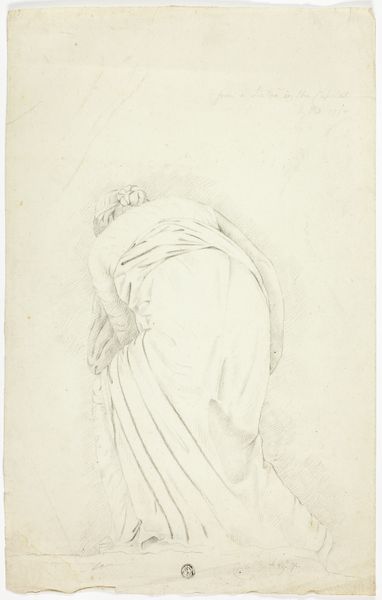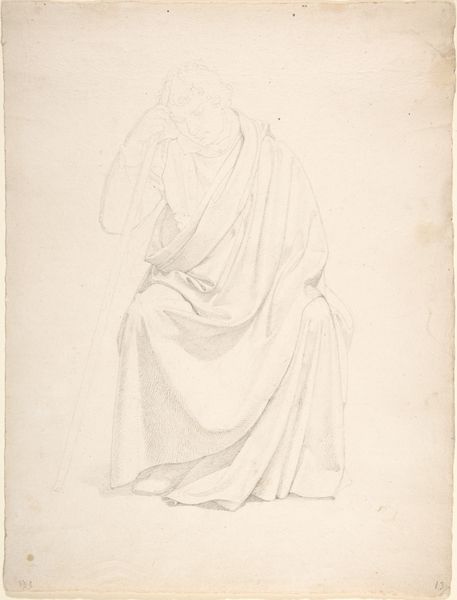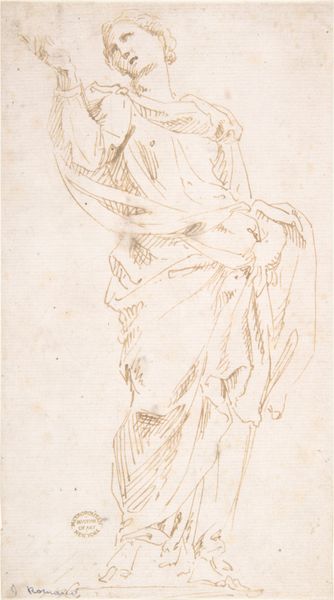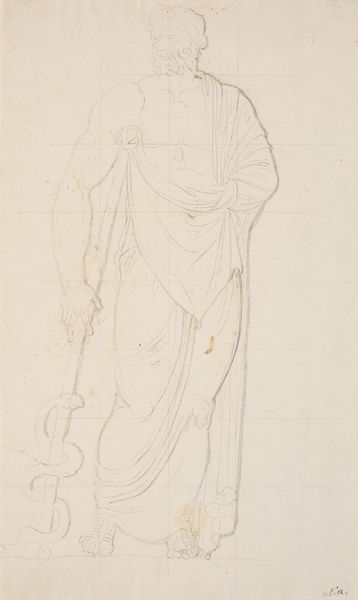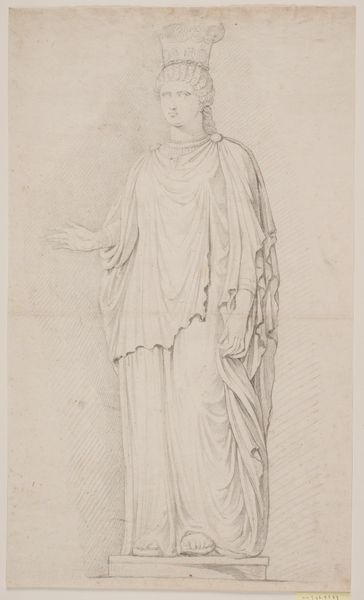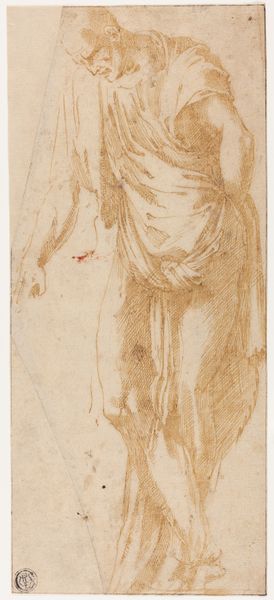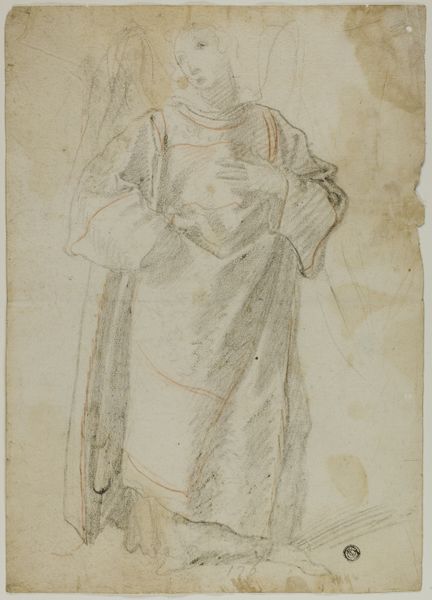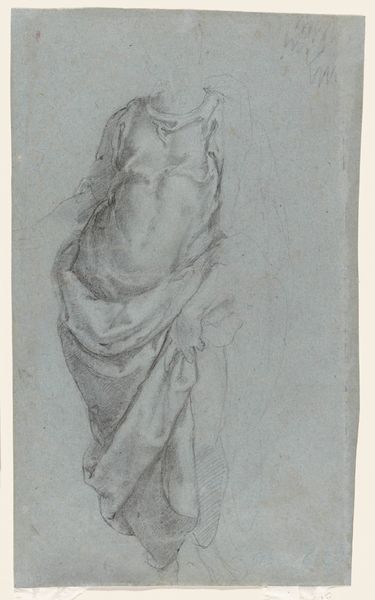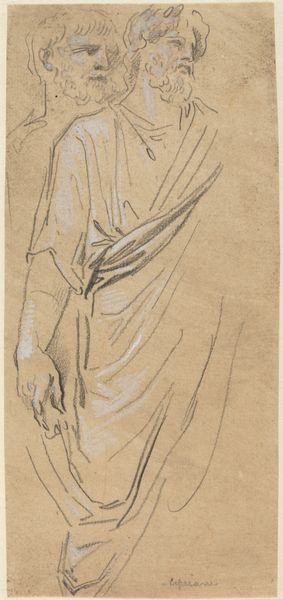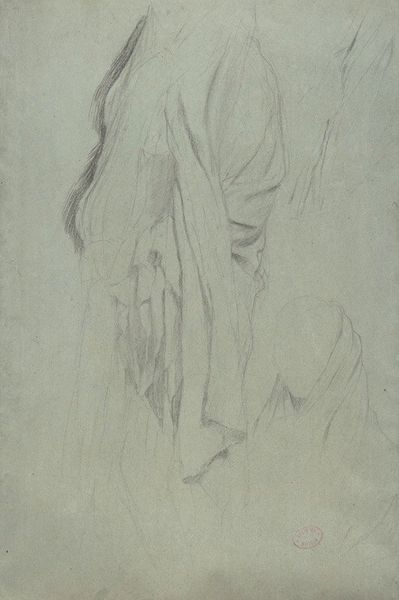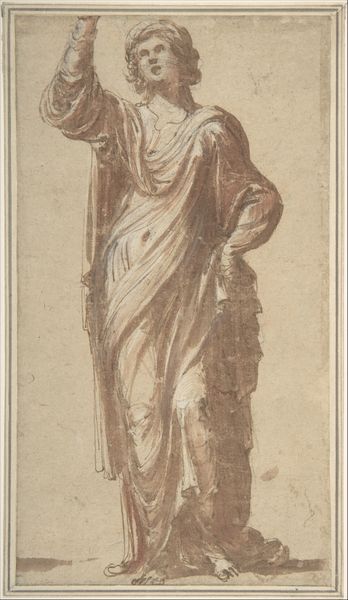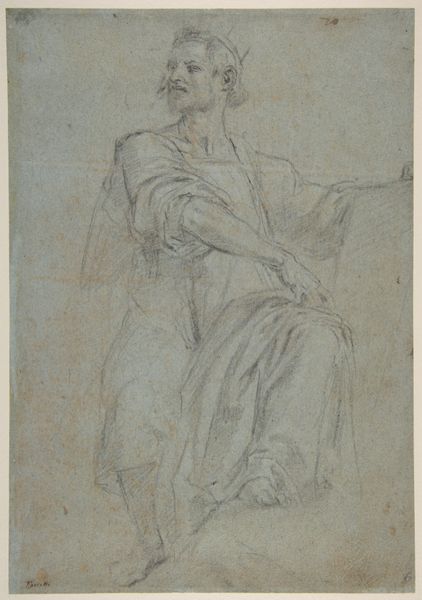
Dimensions: 540 mm (height) x 408 mm (width) (bladmaal)
Editor: This drawing, “Kappeklaedt rytter set bagfra” or “Capped Rider Seen from Behind,” by Jacques Francois Joseph Saly, dating roughly from 1717 to 1776, is a pencil on paper piece housed at the SMK. It strikes me as quite austere and academic. What can you tell me about its cultural significance? Curator: It's fascinating how Saly, positioned within the Neoclassical movement, chose to depict the rider from the back. We're denied a personal connection, and that denial speaks volumes. How do you think the public in his time would have received such a portrayal, especially given the importance of portraiture in cementing social status? Editor: That's an interesting point. Perhaps it’s a comment on power and authority, that the rider's presence is enough, his identity secondary? Curator: Exactly! Think about the role of the Academy during this period. The "academic art" tag isn't just descriptive; it points to a system of training and patronage tied to the monarchy and aristocracy. A work like this could be both a celebration of idealized form, a neoclassical aspiration, and, subtly, a reinforcement of the existing social order. Editor: So, this image, seemingly simple, becomes a product of its time, reinforcing certain ideologies? Curator: Precisely. Consider how museums like the SMK have, over time, canonized works like these, further shaping our understanding of 18th-century society. What was once a drawing for perhaps a sculpture has now been elevated. Editor: That makes me reconsider how I initially saw this drawing. It's not just a rider; it’s a loaded representation of its time. Curator: Indeed, and our interpretations continue to evolve as our own socio-political context shifts. This piece showcases how a museum collection continuously plays a part in reflecting history. Editor: I see it differently now, understanding the layers of context and meaning embedded within it. Curator: It’s all about critically analyzing how art operates within a network of power, influence, and institutional frameworks. Always remember that when you view a piece in a museum.
Comments
No comments
Be the first to comment and join the conversation on the ultimate creative platform.
